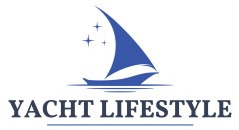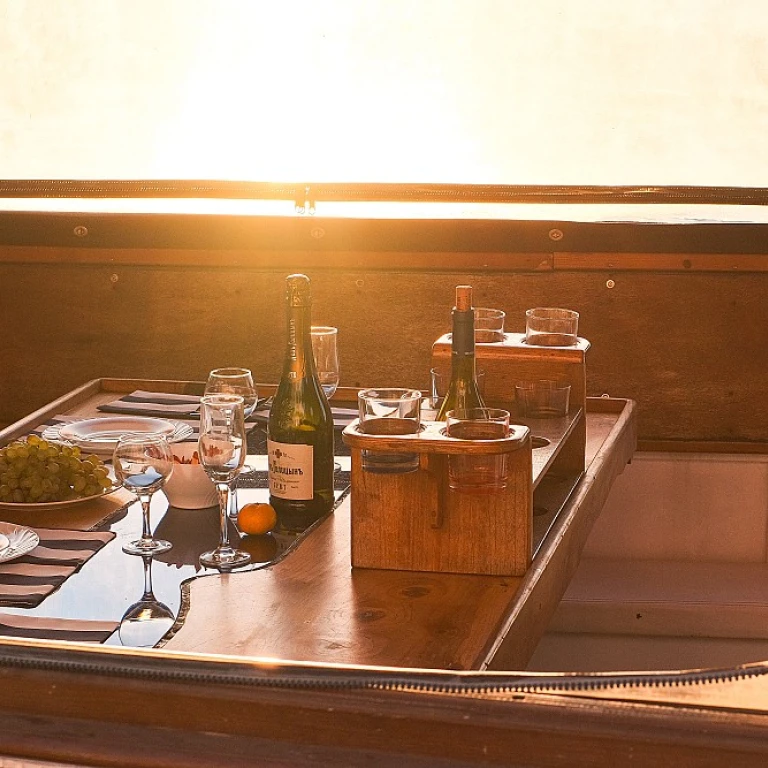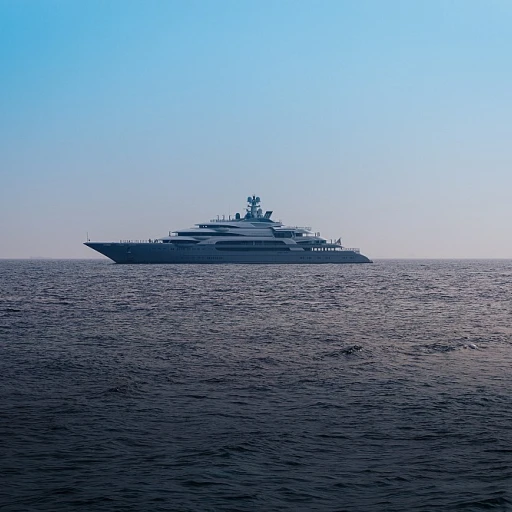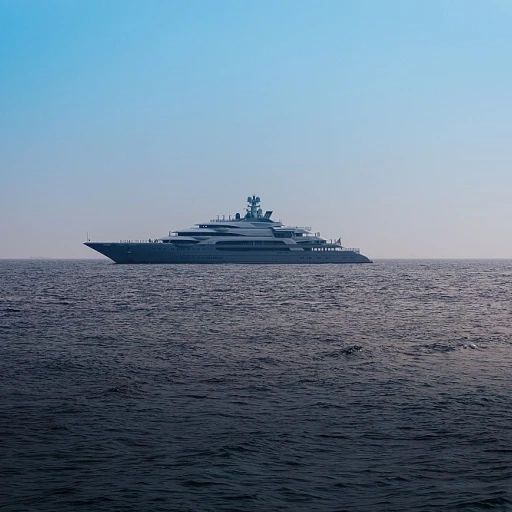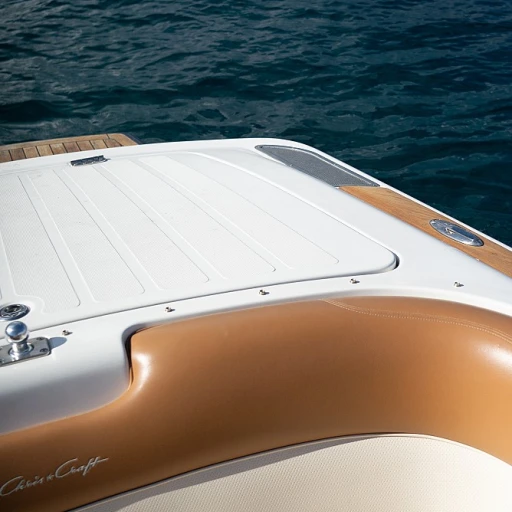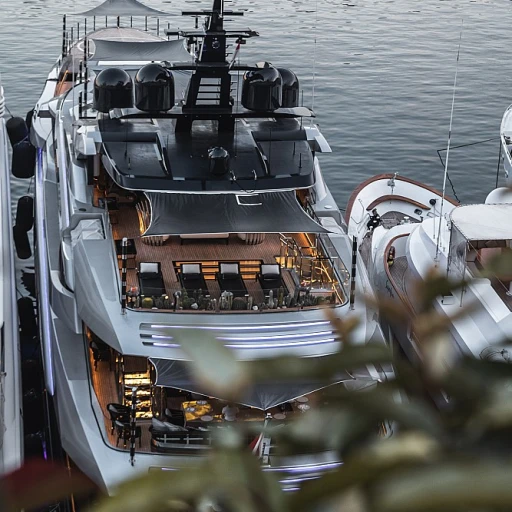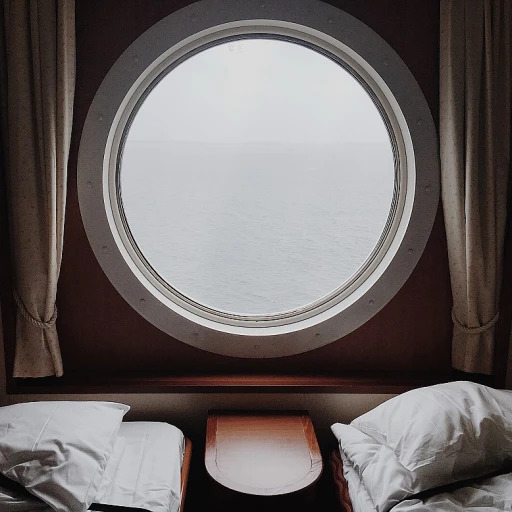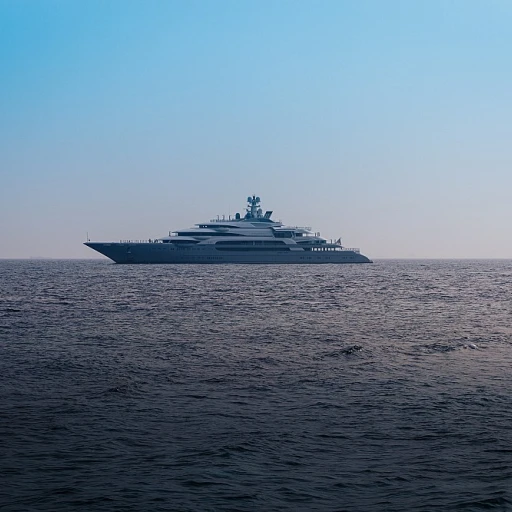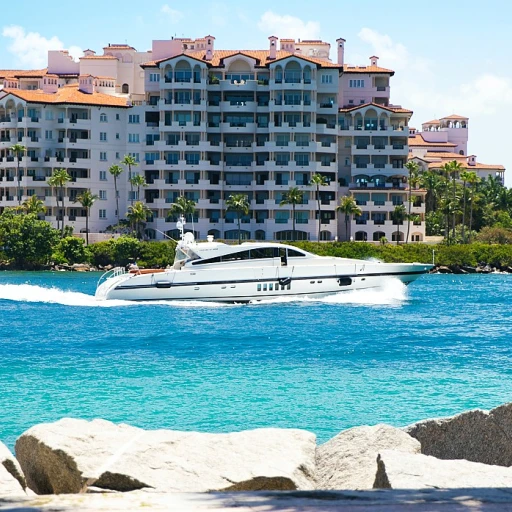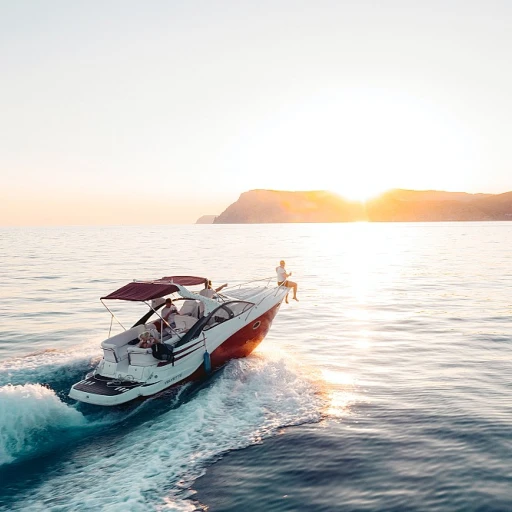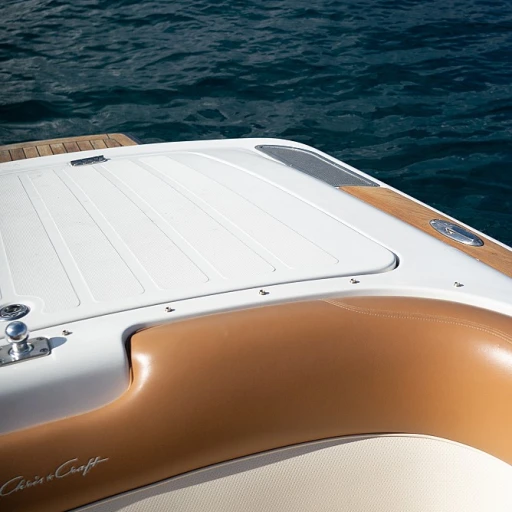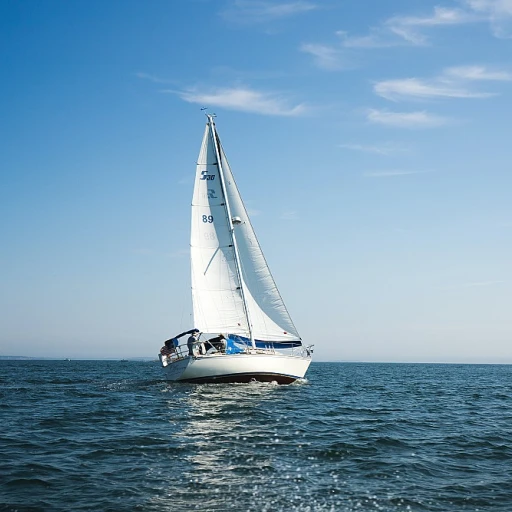-large-teaser.webp)
Understanding Inboard Pontoon Boats
Introducing the Concept of Inboard Pontoon Boats
The world of boating is always evolving, and the introduction of inboard pontoon boats has added a thrilling new dimension to enthusiasts' choices. Pontoons, in general, have always been popular for their spacious design and stability on water. However, the shift from traditional outboard setups to inboard configurations brings distinct advantages.
Inboard pontoon boats, unlike their outboard counterparts, house the motor within the boat's structure. This innovative design not only enhances the boat's aesthetic appeal, with cleaner lines and unobstructed views, but also improves performance in many scenarios. Boats equipped with inboard engines often benefit from enhanced maneuverability and better use of space on deck.
These advantages may prompt those who frequently navigate larger bodies of water, like those in the south, to find inboard pontoons particularly appealing. Additionally, the introduction of models with options like the versatile Sea-Doo Switch series or the more compact Switch Sport add to the charm for those looking for varied use cases.
For those interested in learning more about versatile engines, the mechanics of inboard setups offer fascinating insights. Whether you're exploring new models in stock or considering promotions that apply, the world of inboard pontoon boats provides a fresh and engaging boating experience.
The Advantages of Inboard Engines
An Inside Look at the Performance Edge
In the dynamic world of boating, understanding the nuances of inboard engines in pontoon boats is critical for enthusiasts aiming to elevate their boating experience. Unlike their outboard counterparts, inboard engines offer a unique set of advantages that enhance the overall performance and enjoyment on water.
Firstly, inboard engines provide a quieter and more stable ride. This stability is due to the strategic positioning of the engine within the hull of the pontoon, lowering the center of gravity and reducing noise levels dramatically. It's an optimal choice for those long, leisurely days on the water, whether you're cruising or engaging in fishing adventures with a switch fish.
Furthermore, inboard engines often result in increased deck space on the pontoons, which is a significant advantage for hosting sun-closed gatherings or simply enjoying more room to lounge under the sun. More space means more freedom to switch up your layout, hosting capabilities, or simply more room to move about in style with a switch cruise or switch sport model.
As for their aesthetic appeal, inboard engines allow for a cleaner, more seamless look. Without an outboard engine to interrupt the sleek lines of the boat's design, pontoons can be appreciated in their full glory, blending beautifully in black and white options as well as other custom colors that might appeal based on market trends.
From a technical standpoint, inboards typically exhibit superior fuel efficiency and can handle a wider range of water conditions, which is a compelling factor for those who plan on taking their adventures beyond local waters and into more diverse environments like the inland seas of the south.
For buyers comparing price ranges and starting promotions, the MSRP starting price might be higher for inboard pontoons due to these sophisticated advantages. However, the long-term potential for savings on fuel and reduced maintenance efforts often compensates for the initial investment. Interested individuals are encouraged to learn more about applying these factors to their decision-making process when purchasing a pontoon boat.
As a part of ongoing promotions, some manufacturers might also offer incentives that apply specifically to inboard models, ensuring that this powerful option remains accessible to a broader audience of boating enthusiasts.
Design Innovations in Inboard Pontoons
Innovative Designs Elevate the Inboard Pontoon Experience
Inboard pontoon boats are at the forefront of design innovation, managing to blend functionality with aesthetic appeal exquisitely. These vessels have sparked a passionate response among boating enthusiasts due to their unique features, from switchable layouts to customizable interiors. One of the standout elements is the availability of layouts that accommodate diverse water activities. Pontoons now often feature multi-purpose decks designed for fishing, cruising, or hosting social gatherings. Whether you lean towards a tritoon design or prefer the compact mobility of the switch compact option, there's a model to match your lifestyle. The switch fish series offers an optimal setup for anglers, with added storage for gear and a stable platform for casting. Furthermore, manufacturers are increasingly incorporating sustainable materials and processes. Whether choosing black or white aesthetics, eco-friendly materials ensure these vessels stand the test of both time and environmental scrutiny. Another design aspect revolutionizing the market is the attention to comfort and luxury. Innovative seating arrangements, enhanced privacy policies on-demand, and high-quality finishes elevate the overall boating experience. The addition of sun closed options and retractable covers allows for greater flexibility in how the pontoon boat can be used throughout the day. Those new to the market will find it daunting navigating the variety of models. However, with starting promotions and clear MSRP starting points detailed, potential buyers can easily learn switch options that best meet their needs. For an immersive overview of the season's styles and features, interested learners can view more details. This resource can illuminate how to make the most of each season, whether in South waters or elsewhere. With these exciting new designs, inboard pontoons are stepping out from their traditional outboard competitors, offering distinct benefits and features that cater to a variety of boating preferences and budgets.Market Trends and Consumer Preferences
Consumer Insights and Market Dynamics
The market for inboard pontoon boats is witnessing evolving trends, driven by consumer preferences and technological advancements. With the growing popularity of water-based recreation, the demand for pontoons, including the versatile tritoon configurations, has been on the rise. Shoppers are particularly interested in the seamless incorporation of inboard engines, which offer a cleaner aesthetic by concealing mechanical components typically visible in outboard systems. Furthermore, consumer interest is also fueled by the willingness to switch from traditional outboards to more efficient and powerful inboard options, often highlighted by promotions that apply attractive starting price points and feature-rich packages. In particular, the switch cruise models are capturing attention due to their combination of luxury and performance, offering a compelling package for buyers seeking a premium experience on the water. With many consumers applying focused interest in the versatility of pontoon boats, manufacturers are continuously innovating. The South, for instance, exhibits a significant interest in models that integrate options like the switch fish and switch sport, catering to enthusiasts eager to embrace fishing or sporting activities. MSRP starting values, white and black color options, and quality stock availability are also notable factors influencing purchasing decisions. Promotions apply considerably, often determining consumer purchasing behavior. Seasonal events such as promotions starting on Fri Sat or Sun closed may drive sales and pique consumer curiosity. On the flip side, the market still faces certain challenges, such as price sensitivity and the need to maintain boat privacy during outings, aspects that manufacturers are continually striving to address. As these dynamics unfold, the market's trajectory is closely aligned with consumer preferences, shaped by a combination of practical needs and an aspirational view of recreational boating. The blend of the doo switch and sun closed features promises to keep the market vibrant and dynamic in the coming years.Challenges in the Inboard Pontoon Market
Obstacles Hindering Growth
In the world of pontoon boats, the inboard models face several challenges that impact their growth potential. Although inboard engines offer a range of advantages, such as smooth and efficient operation, they also present certain impediments.
One of the major challenges is the price. Inboard pontoons often have a higher starting MSRP compared to their outboard counterparts. This price difference can discourage budget-conscious buyers who might otherwise be interested in the benefits of inboard systems.
Additionally, stock availability can be a concern. The demand for inboard pontoon boats often surpasses supply, especially in popular regions like the south. Customers may face lengthy wait times to acquire their desired model, such as a switch compact or a switch cruise.
Design complexity also plays a role. Inboard engines require specific configurations within the boat's hull, adding to the intricacy of manufacturing and potential repair costs. These factors can make maintenance more involved compared to more straightforward systems like the sea doo switch.
Customer education remains another hurdle. Potential buyers need to learn more about the distinctions and benefits of inboard pontoon boats. Promoting awareness through effective marketing and applying engaging content could bridge this gap.
Weathering the Competition
The competition posed by outboard pontoons is significant. Many boat owners might initially lean towards outboards due to their ease of use and serviceability. For inboard pontoon manufacturers, understanding and addressing these consumer preferences is crucial to capturing market share.
While promotions apply to expand consumer reach, the challenge remains to shift the primary consumer demand from the traditional outboard models to the more sophisticated inboard alternatives.
Adapting to Evolving Preferences
Inboard pontoon boats must adapt to changing consumer habits. With increased emphasis on sustainability and eco-friendly solutions, manufacturers might need to re-evaluate their offerings, potentially embracing hybrids or entirely new propulsion technologies.
Meanwhile, exploring new markets and providing versatile options such as switch sport or switch fish could help appeal to diverse consumer interests and provide a broader view of the pontoon market.
- Challenge of inboard design and maintenance
- Education and consumer awareness
- Competition with outboard models
- Need for adapting to consumer trends
Future Prospects for Inboard Pontoon Boats
Emerging Horizons for Inboard Pontoon Boats
The future of inboard pontoon boats is shaping up to be quite promising, driven by a blend of technological advancements and evolving consumer preferences. As the market continues to grow, several key trends are likely to influence the direction of this segment.
One significant factor is the increasing demand for eco-friendly and efficient propulsion systems. Inboard engines, known for their quieter operation and lower emissions compared to traditional outboard motors, are becoming more appealing to environmentally conscious consumers. This shift is expected to drive further innovation in engine technology, with manufacturers focusing on enhancing fuel efficiency and reducing the carbon footprint of their boats.
Design innovations are also playing a crucial role in the future of inboard pontoons. Manufacturers are experimenting with new materials and construction techniques to create lighter, more durable boats. This not only improves performance but also allows for more creative and customizable designs, catering to the diverse tastes of pontoon enthusiasts.
Market trends indicate a growing interest in multi-functional pontoons, such as the switch cruise and switch sport models, which offer versatility for both leisure and sport activities. The ability to switch between different configurations makes these boats particularly attractive to families and groups looking for a versatile watercraft.
However, the market is not without its challenges. The price of inboard pontoon boats can be a barrier for some consumers, although promotions and starting msrp options are often available to make these boats more accessible. Additionally, the availability of stock can be an issue, especially during peak seasons when demand is high.
Looking ahead, the industry is poised for growth, with manufacturers likely to continue pushing the boundaries of what inboard pontoon boats can offer. As more consumers become interested in the unique benefits of inboard engines and the versatility of pontoons, the market is expected to expand, offering exciting opportunities for both manufacturers and consumers alike.
